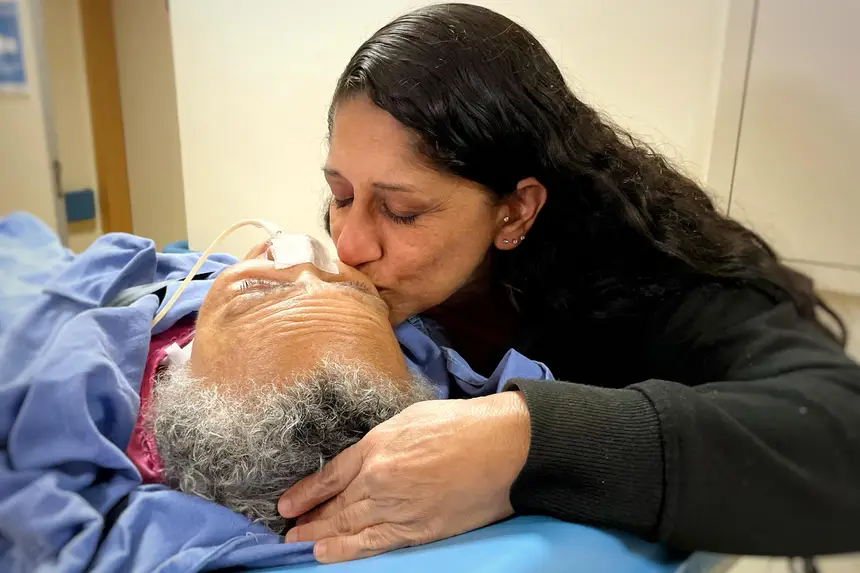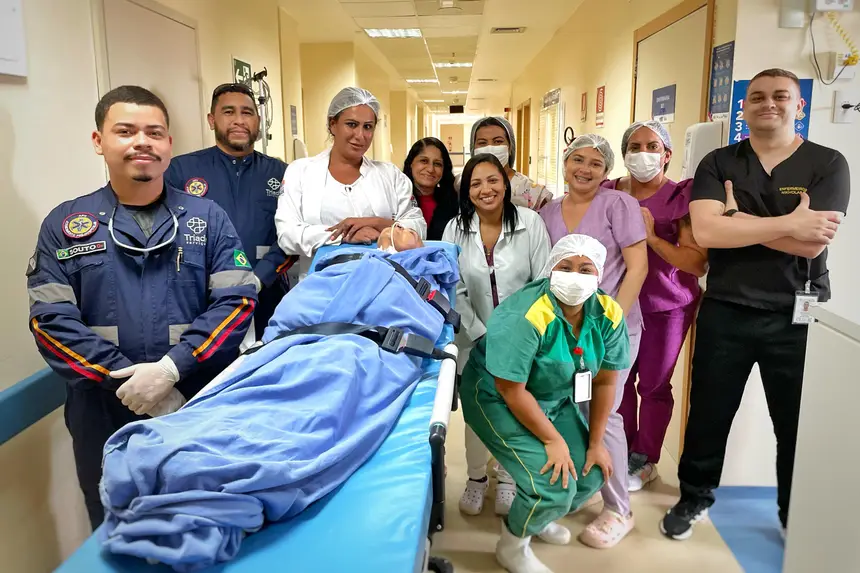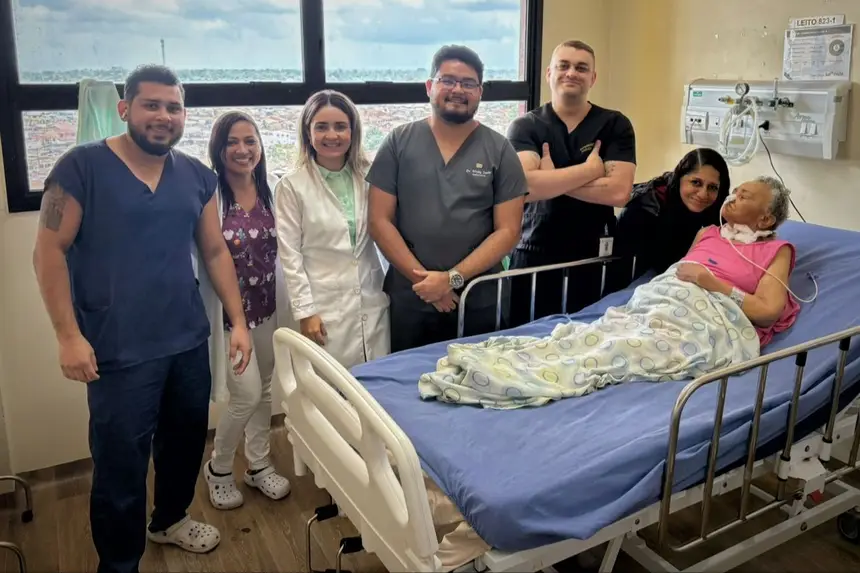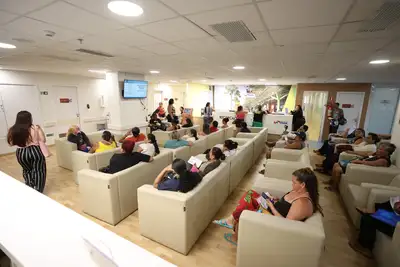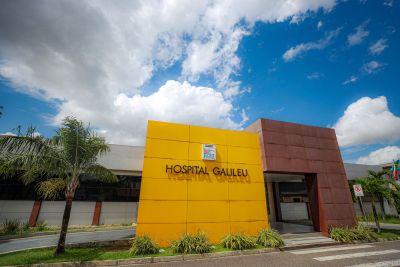74-Year-Old Patient Discharged After Eight Months Hospitalized at Abelardo Santos Hospital
She had a stroke in January of this year, and her recovery was monitored by a multidisciplinary team
“Today, I can say that it is a victory to leave here and go home with her,” said Georgete Milene Caldeira, 44, while celebrating the hospital discharge of her aunt, Maria de Nazaré de Jesus, 74, after 223 days of hospitalization at the Dr. Abelardo Santos Regional Hospital (HRAS) in Icoaraci, a district of Belém. The retiree, who was hospitalized after a stroke (Cerebral Vascular Accident), learned that she would return home on the afternoon of this Thursday (14).
The moment occurred just a few days after Maria de Nazaré celebrated another year of life, on August 8. “I can say that she received a great gift, which was her recovery. I accompanied my aunt throughout this time, and we know that it is necessary to have patience and to be surrounded by professionals who make the treatment lighter. I congratulate the entire HRAS team,” Georgete added.
Care - Maria de Nazaré arrived at Abelardo Santos Hospital on January 13, after suffering a stroke. Since then, she has experienced ups and downs. After a delicate surgery, the retiree was transferred to the Intensive Care Unit (ICU), where she remained under daily monitoring by a multidisciplinary team.
According to Dr. Mayana Brito, who monitored the case, strokes often leave serious sequelae, and the professionals' work is to minimize these impacts as much as possible, so as not to compromise the patient's quality of life. “Mrs. Maria was left with some motor limitations and difficulties in eating. But together, we achieved a satisfactory result, given such a delicate situation,” the doctor informed.
She added that, “today, we were able to safely discharge her, thanks to the efforts of dozens of professionals who enabled the good recovery of the patient, allowing her to return home and reunite with her family. The environment where she will stay has already been adapted, as it is not enough to just plan the discharge from the hospital; it is also necessary to ensure adequate support at home.”
Better at Home - After leaving HRAS, Maria was taken to her home in an ambulance. Now, she will receive attention from professionals from the “Better at Home” program of the Ministry of Health, which offers home care for people who need continuous care, avoiding prolonged hospitalizations and promoting comfort and recovery in the family environment.
Without this type of care, many patients could end up needing frequent hospitalizations. “This was another stage of our work: to ensure that she could leave here and have specialized follow-up at home, which guarantees quality of life for her and her family. In the end, everything worked out,” said Hellem Moraes, a nurse at Abelardo Santos Hospital.
The professional also emphasized that this treatment alternative reduces the risk of hospital infections and other complications associated with long stays in health units. “Mrs. Maria will be in good hands, safe, in the comfort of her home, receiving constant monitoring of her condition's evolution, with adjustments to treatment whenever necessary,” the nurse added.
Reference - The Dr. Abelardo Santos Regional Hospital is the largest public unit of the Government of Pará. The institution is managed by the Social Institute Mais Saúde (ISMS), in partnership with the State Department of Public Health (Sespa). A reference in care for women, children, and the indigenous population, it performed more than 1 million services in 2024 alone, including medium and high complexity surgeries, exams, and consultations.
The structure includes a pediatric, gynecological, and obstetric emergency room open 24 hours, in addition to 360 beds distributed among emergency, surgery, clinical hospitalization, Intensive Care Unit (ICU), and Intermediate Care Units (UCIn). It is also one of the main maternity hospitals in the state, performing more than 5,000 births annually, and has a renal therapy center.
The unit's Care Manager, Adriano Furtado, highlighted the hospital's role for the population. “The example of Mrs. Maria reflects our care pillars: to offer humanized and safe treatment, aiming for the patient's recovery. This is our commitment, led by qualified professionals and efficient management. And the one who benefits is the population,” he reinforced.


